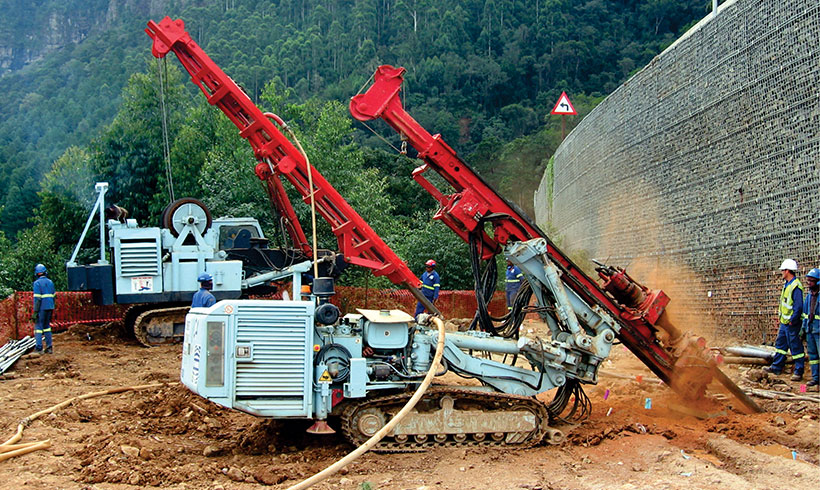What Does Geotechnical Engineering For Construction Projects Mean?
What Does Geotechnical Engineering For Construction Projects Mean?
Blog Article
Geotechnical Engineering For Construction Projects for Beginners
Table of ContentsThe 4-Minute Rule for Geotechnical Engineering For Construction ProjectsSee This Report about Geotechnical Engineering For Construction Projects4 Simple Techniques For Geotechnical Engineering For Construction ProjectsGet This Report about Geotechnical Engineering For Construction ProjectsThe Ultimate Guide To Geotechnical Engineering For Construction ProjectsThe Main Principles Of Geotechnical Engineering For Construction Projects More About Geotechnical Engineering For Construction Projects
and Kovacs, W. (1981 ), An Introduction to Geotechnical Engineering, Prentice-Hall, Inc. Deep Check Technology (2023 ): Deep Scan Technology discovers covert frameworks at the site of Denmark's tallest structure. "Geofrost Coring". GEOFROST. Gotten 20 November 2020. Han, Jie (2015 ). Concepts and Practice of Ground Renovation. Wiley. ISBN 9781118421307. RAJU, V. R.Ground Improvement Technologies and Situation Histories. Singapore: Research Study Posting Services. p. 809. ISBN978-981-08-3124-0. Ground Improvement Principles And Applications In Asia. Pariseau, William G. (2011 ). Design evaluation in rock mechanics. CRC Press. Hegde, A.M. and Palsule P (Geotechnical Engineering for Construction Projects).S. (2020 ), Performance of Geosynthetics Reinforced Subgrade Subjected to Repeated Vehicle Loads: Speculative and Mathematical Researches.
Cengage Learning, Stamford, 666 p. Atkinson, J., 2007. The mechanics of soils and foundations. Taylor & Francis, N.Y., 442 p. Drifting Offshore Wind Generators: Reactions in a Sea state Pareto Optimal Styles and Economic Assessment, P. Sclavounos et al., October 2007. Nicholson, D, Tse, C and Cent, C. (1999 ). The Observational Technique in ground design concepts and applications.
The smart Trick of Geotechnical Engineering For Construction Projects That Nobody is Discussing
Research laboratory and field screening plays an important function in this process. By drawing out examples from the planet's subsurface and applying a collection of tests, geotechnical designers can predict the behavior of dirt layers and evaluate their suitability for numerous building endeavours. The significance of geotechnical design in civil design can not be overstated, attributable to a number of elements: The first action in any geotechnical research study includes determining the soil kind at the building website.
The structure acts as the bedrock of any kind of construction project. Selecting the proper structure kind is a decision that pivots on the comprehensive evaluation given by geotechnical engineering.

Geotechnical website examination is an important action in the planning and execution of any kind of building and construction project. It entails the collection and evaluation of information connected to the physical homes of dirt and rock under a recommended building and construction website. This info is important for the design and building and construction of secure, steady, and sustainable structures.
The Buzz on Geotechnical Engineering For Construction Projects
In this blog site, we will explore the significance of geotechnical website investigation, its numerous elements, and how it profits construction tasks. Geotechnical site investigation, also known as subsurface expedition, involves a series of tasks targeted at establishing the soil, rock, and groundwater problems at a construction site. The primary purposes are to recognize potential geotechnical hazards, assess the engineering residential properties of subsurface materials, and offer referrals for the design and building of foundations, preserving walls, and various other frameworks.
This might include geological maps, aerial photos, previous investigation reports, and historic data. The desk research study helps in recognizing possible geotechnical issues and preparing the subsequent fieldwork. Complying with the desk research, a website reconnaissance is carried out to aesthetically evaluate the website and its environments. This entails observing the topography, water drainage patterns, existing frameworks, greenery, and any type of indications of instability or erosion.
Little Known Questions About Geotechnical Engineering For Construction Projects.
Shallow test pits are excavated to straight observe and sample the dirt and rock. This method serves for researching the upper layers of the subsurface and recognizing near-surface dangers. Non-invasive geophysical approaches, such as seismic refraction, ground-penetrating radar (GPR), and electric resistivity tomography (ERT), are utilized to map subsurface problems and discover anomalies.
Soil and rock examples accumulated throughout the field examination are subjected to lab testing to identify their physical and mechanical residential or commercial properties. These tests supply necessary data for geotechnical analysis and style.
The key benefit of geotechnical site investigation is making certain the safety and stability of structures. By understanding the subsurface conditions, engineers can develop foundations and various other architectural components that can hold up against the lots and ecological pressures they will certainly be subjected to. This reduces the risk of settlement, subsidence, and structural failure.
Geotechnical Engineering For Construction Projects Fundamentals Explained
This makes certain effective and risk-free construction methods. Geotechnical site examinations are usually required by constructing codes and guidelines.
This information is invaluable for job supervisors, architects, and professionals in creating realistic schedules, budget plans, and backup plans. Geotechnical Engineering for Construction Projects. Skyscraper in a Coastal AreaIn a seaside city, a skyscraper residential building was intended on a website with suspected loose sand deposits and a high water table. An in-depth geotechnical examination, consisting of borehole boring, CPT, and geophysical surveys, was conducted
Geotechnical Engineering For Construction Projects Things To Know Before You Get This
Based on these findings, the structure layout was changed to consist of deep stack foundations prolonging into steady strata, and ground enhancement methods, such as vibro-compaction, were carried out to mitigate liquefaction dangers. This proactive i thought about this approach ensured the safety and security of the building while preventing costly post-construction removal. Facilities Development on a Sloping TerrainA major framework job, including the building of a freeway and bridges, was intended on an uneven terrain with high slopes.

The Leaning Tower of Pisa (Italy), an iconic architectural marvel, is well known for its unexpected tilt from significant geotechnical problems. The tower's foundation was improperly developed to take care of the soft, unsteady dirt underneath it, resulting in unequal settlement and its unique lean. Our globe is populated with remarkable facilities projectsfrom looming skyscrapers to stretching bridgesall standing testimony to the development of the numerous building tools and techniques readily available.
Geotechnical design is a specific area within civil engineering that concentrates on studying the habits of planet products. This branch delves deep into the groundinvestigating how the soil, rock, and groundwater at a building site can influenceand be these details influenced bythe facilities that we put up on and into them. Before a single block is laid or a concrete foundation put, geotechnical designers probe right into the earthgathering important information about the website's dirt composition, rock structure, and groundwater levels.
All about Geotechnical Engineering For Construction Projects

is a device used to assess the stability and load-bearing ability of piles throughout installment, leveraging the principle of wave proliferation. It enhances building and construction efficiency by providing real-time assessments, thus making sure secure and reliable heap structures. Among the sensible applications of geotechnical engineering involves deciding and performing the best techniques for foundation building.
Pile driving stands for even more than the plain act of putting architectural aspects right into the ground. On the contrary, it is a thoroughly managed process of moving a framework's lots past the much less secure soil layers closer to the surfacedown to the much more substantial strata that lie beneath. When it comes to heap driving, take into consideration just how geotechnical engineers expertly utilize this strategy to uniformly disperse the structure's weight.
Report this page